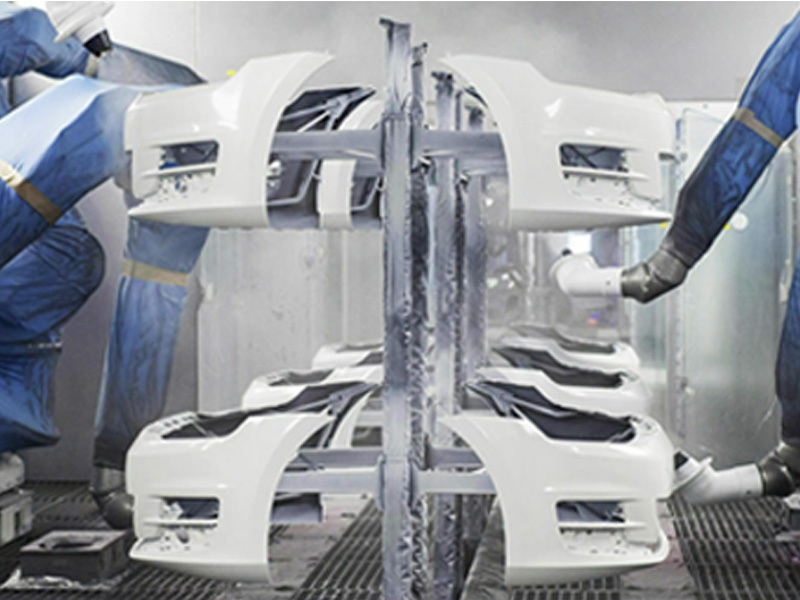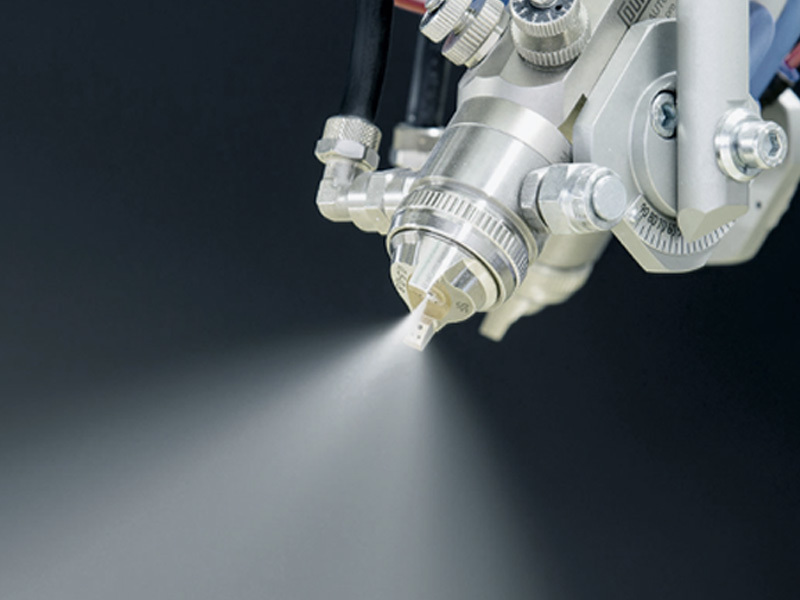Ensuring Quality: The Importance of CE Certified Circuit Board Coating Lines
Release time:
2025-06-28
Ensuring Quality: The Importance of CE Certified Circuit Board Coating Lines Table of Contents Introduction to Circuit Board Coating What is CE Certification? Benefits of CE Certified Circuit Board Coating Lines Enhanced Product Quality Compliance with Regulations Market Acceptance and Credibility The Circuit Board Coating Process Preparation for Coa

Ensuring Quality: The Importance of CE Certified Circuit Board Coating Lines
Table of Contents
- Introduction to Circuit Board Coating
- What is CE Certification?
- Benefits of CE Certified Circuit Board Coating Lines
- The Circuit Board Coating Process
- Selecting the Right CE Certified Coating Line
- Maintaining Circuit Board Coating Lines
- Future Trends in Coating Technologies
- Conclusion
- FAQs
Introduction to Circuit Board Coating
Circuit board coating is a critical process in the electronics industry, designed to enhance the durability and performance of electronic components. As devices become smaller and more intricate, ensuring the longevity and reliability of circuit boards has never been more crucial. One of the most effective ways to achieve this is through the use of **CE certified circuit board coating lines**, which offer a blend of quality assurance and compliance with safety standards.
What is CE Certification?
**CE certification** stands for Conformité Européenne, a designation that indicates a product meets the European Union's safety, health, and environmental protection standards. For circuit board coating lines, CE certification involves rigorous testing and evaluation to ensure that the machines used in the coating process comply with these standards. This certification not only assures manufacturers of the quality and safety of their products but also helps in gaining trust from consumers and regulatory bodies.
Benefits of CE Certified Circuit Board Coating Lines
Implementing **CE certified circuit board coating lines** brings several key advantages that contribute to enhanced product quality and operational efficiency.
Enhanced Product Quality
One of the standout benefits of using CE certified coating lines is the **enhanced product quality** they provide. These lines utilize advanced technologies and materials, resulting in a more uniform and effective coating application. Consequently, the circuit boards are better protected against environmental factors such as moisture, dust, and chemicals, which can lead to failures in electronic devices.
Compliance with Regulations
In today's global market, compliance with industry regulations is non-negotiable. CE certification ensures that manufacturers meet essential safety and environmental standards, enabling them to operate within the EU and beyond. This compliance not only safeguards the end-user but also protects manufacturers from potential legal liabilities and sanctions.
Market Acceptance and Credibility
For manufacturers, having a **CE certified circuit board coating line** enhances market acceptance and credibility. It signifies a commitment to quality and safety, which can be a decisive factor for consumers when choosing between competing products. This certification can also open doors to new markets, as many buyers look for CE compliance as a prerequisite for purchasing.
The Circuit Board Coating Process
Understanding the coating process is crucial for achieving optimal results in circuit board protection. The process typically involves several key stages:
Preparation for Coating
Before applying the coating, the circuit boards must be thoroughly cleaned and prepared. This step is vital to remove any contaminants that might compromise the adhesion of the coating. Common preparation methods include ultrasonic cleaning and chemical cleaning, which ensure that the surface is free from oils, dust, and other residues.
Application Methods of Coating
There are various **application methods** used in circuit board coating, including:
- **Spray Coating:** This method provides an even distribution of coating material and is suitable for various types of coatings, including conformal coatings and potting compounds.
- **Dip Coating:** In this method, the circuit board is submerged in a coating solution, allowing for complete coverage and uniform thickness.
- **Brush Coating:** Suitable for smaller batches or specific areas, brush coating provides precision but may not achieve the same uniformity as spray or dip coating.
Each method has its advantages and limitations, and the choice depends on the specific requirements of the project.
Curing and Finishing Steps
After the coating is applied, it must undergo curing to achieve optimal performance characteristics. The curing process can involve heat, UV light, or other methods, depending on the type of coating used. Following curing, additional finishing steps may include trimming excess material, inspection for defects, and final quality checks to ensure that the coating meets all specifications.
Selecting the Right CE Certified Coating Line
Choosing the right coating line is crucial for maximizing operational efficiency and product quality. Here are some considerations to keep in mind:
Key Considerations in Selection
When selecting a **CE certified circuit board coating line**, consider the following factors:
- **Type of Coating:** Different coatings have varying properties and applications. Ensure that the coating line is compatible with the materials you intend to use.
- **Production Capacity:** Evaluate the production needs of your facility and choose a coating line that can handle the required volume without compromising quality.
- **Automation Level:** Automated systems can enhance efficiency and reduce labor costs, but it’s essential to balance automation with the flexibility needed for custom projects.
Top Manufacturers of CE Certified Coating Lines
Several manufacturers are renowned for producing high-quality CE certified circuit board coating lines. Examples include:
- **Nordson:** Known for its innovative coating solutions, Nordson offers a range of machines tailored for different production needs.
- **PVA:** PVA specializes in precision coating technologies and is widely trusted in the electronics industry for its reliable equipment.
- **Asymtek:** Asymtek provides advanced automated dispensing and coating solutions, ensuring high-quality results for circuit board applications.
Researching these manufacturers and their offerings can help you make an informed decision that aligns with your production goals.
Maintaining Circuit Board Coating Lines
Proper maintenance of circuit board coating lines is essential to ensure longevity and optimal performance. Regularly scheduled maintenance should include:
- **Cleaning:** Routine cleaning of components to prevent residue buildup that can impede performance.
- **Calibration:** Periodic calibration of machines to ensure they operate within specified parameters.
- **Inspection:** Regular inspections for wear and tear, enabling proactive repairs before issues escalate.
Implementing a robust maintenance program can help reduce downtime and maintain product quality.
Future Trends in Coating Technologies
The field of circuit board coating is evolving rapidly, with several trends shaping its future:
- **Nanotechnology:** The integration of nanotechnology in coatings is leading to stronger, lighter, and more efficient protective layers.
- **Eco-Friendly Coatings:** As sustainability becomes a priority, eco-friendly coating materials are gaining traction, offering protection without harmful environmental impacts.
- **Advanced Automation:** The use of AI and machine learning in automation can optimize coating processes, improving efficiency and reducing waste.
Staying abreast of these trends can position manufacturers to adopt innovative solutions that enhance product offerings.
Conclusion
In conclusion, **CE certified circuit board coating lines** play a pivotal role in ensuring the quality and reliability of electronic products. By adhering to strict safety and quality standards, these certified lines not only enhance product performance but also bolster market acceptance and consumer trust. Manufacturers must prioritize the selection and maintenance of these coating lines to ensure compliance and maximize production efficiency. As the industry continues to evolve, embracing new trends and technologies will be essential for maintaining a competitive edge.
FAQs
1. What are the main advantages of CE certification for coating lines?
CE certification ensures that coating lines meet essential safety and environmental standards, enhancing product quality and market acceptance.
2. How do I choose the right circuit board coating line for my needs?
Consider factors such as the type of coating, production capacity, and automation level when selecting a coating line.
3. What are the common methods for applying coatings on circuit boards?
Common methods include spray coating, dip coating, and brush coating, each with its unique advantages.
4. How can I maintain my circuit board coating line effectively?
Regular cleaning, calibration, and inspections are key components of an effective maintenance program.
5. What future trends should I be aware of in circuit board coating technologies?
Trends include the use of nanotechnology, eco-friendly coatings, and advancements in automation technologies.
By understanding the importance of CE certified circuit board coating lines and following best practices in selection and maintenance, manufacturers can ensure high-quality, reliable electronic products that meet the demands of today's market.











